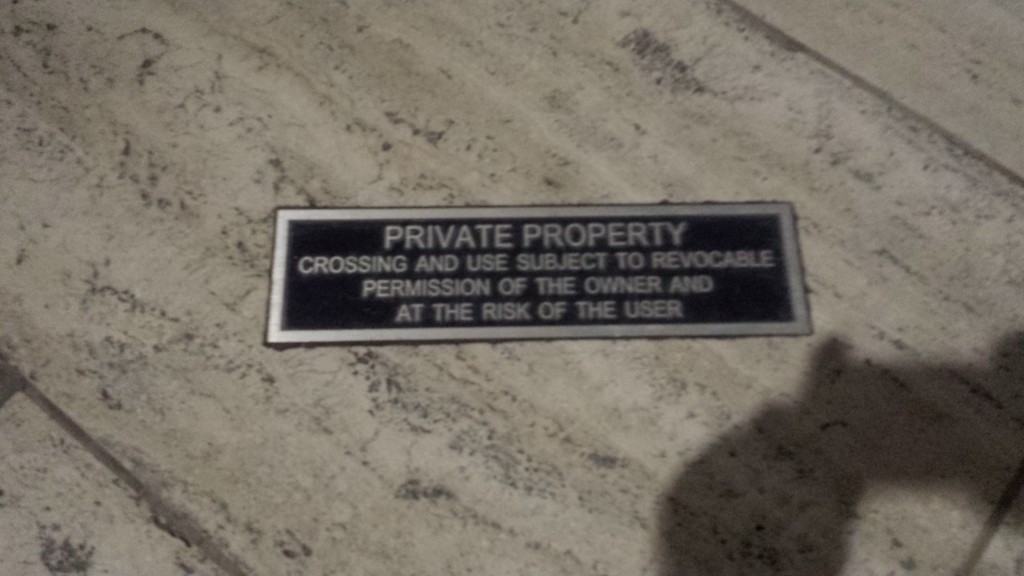The second question from my Property I final exam was based on the Disney movie, Frozen. Much like my Back to the Future question, I worked in a number of songs from the movie (“Do you want to build a snowman”) a turned them into property disputes (acquisition by creation). Also, I transformed Elsa’s snow palace into an impenetrable ice fortress, alluding to the Case of the Speluncean Explorers (Hint: Elsa melts and drinks Olaf). Sometimes, you just have to let it go.
Instructions
You are a law clerk for the Chief Justice of the Arendelle Supreme Court. You are asked to write a bench memo of no more than 500 words that analyzes a frozen property dispute between Anna, Elsa, and Hans over the estate of Whiteacre. The Kingdom of Arendelle adheres to all common law property rules, as articulated in the Restatement (First) of Property. Arendelle applies a common law system with respect to marital property.
—
In the Kingdom of Arendelle live two sisters, Princesses Elsa and Anna. Elsa has magical powers, and can create ice, frost, and snow with her fingers. But she struggles mightily to keep her powers under control.
On January 1, “for the first time in forever,” the castle gates opened, and a huge banquet was held in honor of Queen Elsa’s coronation.
Following Elsa’s coronation, Anna meets the charming and handsome Hans. After getting to know each other for all of five minutes, Hans blurts out “Can I say something crazy? Will you marry me?” Anna replies, ebulliently, “Can I say something even crazier? Yes!”
Hans gives Anna a sparkling diamond ring. Just as Anna is about to put it on her finger, Hans tells her to “This is for you to hold onto for now.” Ignoring him, she giddily puts the ring on. Hans explains—not that Anna is listening—that the ring belongs to his grandmother, and she told Hans that he could have it once she dies.
Anna and Hans’s wedding is held on January 2. In truth, Elsa is a bit jealous, and tells herself, “conceal, don’t feel.”
On January 3, the day after the wedding, Elsa executes the following deed:
“Whiteacre, from Elsa to Hans and Anna as tenants by the entirety.”
The couple quickly signed the paperwork, and ran onto Whiteacre to enjoy their new home. Whiteacre was the only property the couple would acquire. Later that day, Hans’s grandmother dies in a horrific ice fishing accident. The grandmother’s will left all of her property to her husband, Hans’s grandfather.
On February 1, Anna invites Elsa to Whiteacre. Anna has an idea to create something—or more precisely, someone. Anna asks “Elsa, do you want to build a snowman?” Elsa, not interested, replies “Go away, Anna.” Begrudgingly, Anna says, “Okay, bye.” Yet, later that day, Elsa agrees to Anna’s idea. With her magical powers, Elsa conjures up a pile of snow. Then Anna rolls the giant snowballs and she builds the snowman. Elsa puts sticks inside the snowballs to create arms, and adds a carrot for a nose. With a spark of Queen Elsa’s magic, the snowman comes to life! They call the snowman Olaf. Olaf chimes in, not ironically, “Just imagine how much cooler I’ll be in summer.” Soon the sisters start bickering over the snowman. Anna insists it was her idea to create him. Elsa counters that it was her magic that brought Olaf to life.
Anna grabs Olaf, and Elsa screams “Let it go! Let it go!” Soon Elsa’s powers get the better of her, and she creates a massive ice cave around them. Soon, the two sisters are trapped in the frozen fortress of solitude. Though they are on Whiteacre, within the limits of the Kingdom of Arendelle, they may as well be thousands of miles away. The ice is so thick that experts determine it will be impossible to drill through the walls to rescue the sisters. They will have to wait for warmer temperatures so the ice can thaw. Hans bangs on the ice walls, furious that he cannot enter.
To avoid dying of dehydration, Elsa uses her powers to melt Olaf, and she drinks him. “Desperate times call for desperate measures. The cold never bothered me anyway,” she says.
Realizing that she had the power to melt the frozen fortress, Else proposes a deal to Anna. Elsa demands that Anna give her a lease to Whiteacre, in exchange for releasing her from the ice cave. Anna, fearing for her life, writes the following lease on March 1:
“From Anna to Elsa, starting on March 1, a lease for Whiteacre for so long as Anna lets Elsa live there, for 100 pieces of silver per month.”
Elsa, thrilled with the transaction, inadvertently shoots Anna with a blast of cold air, freezing her heart. Anna cries out that “Only the act of true love will thaw a frozen heart.” Anna knows that unless her heart is thawed by her true love, she will die.
On April 1, Elsa finally melts the fortress. Hans, learning of Anna’s condition, leans in to kiss her. He says, “I am your true love.” But at the last minute, Hans pulls back, and says, “if you die, I get Whiteacre all to myself. Good luck with that frozen heart. I’m out of here.” Anna is furious at him.
That day, Anna executes and records the following deed:
“Whiteacre, from Anna to Anna.”
Then Anna updates her will, with all the proper witnesses and attestations:
“I leave all of my property, real and personal, to my sister Elsa, and nothing to Hans.”
The next day on April 2, Anna dies. Anna’s estate is probated on April 10. Hans learns that Anna disinherited him, and he is furious!
On May 1, Elsa returns to Whiteacre and cries out, “I figured out what true love is. The truest love is the bonds between sisters.” With that affection, Anna’s lifeless corpse magically returned to life.
Then, Elsa tells Hans and Anna, “I’m not going to pay any rent for my lease on Whiteacre, and I’m moving out today.” To that date, Elsa had not paid any rent for her lease on Whiteacre.
Following this chain of frozen events, neither party would “let it go,” and a series of suits are filed in the original jurisdiction of the Arendelle Supreme Court.
—
Questions
- Hans filed an action in replevin against Anna for the return of the diamond ring. Anna counterclaimed that she does not have to return the ring. Hans’s grandfather, the sole heir of Hans’s grandmother, counterclaimed, and asserted that he is the lawful owner of the ring. Please address the strongest argument in favor of each party: (a) Hans, (b) Anna, and (c) Hans’s grandfather, the sole heir of Hans’s grandmother.
- Anna files suit against Elsa for destruction of her property—Olaf. Elsa counterclaimed, asserting that Olaf was her property. Please discuss who acquired property of Olaf through creation? Address the strengths and weaknesses of each of their claims. (A criminal prosecution for the murder of Olaf will be held in a separate court proceeding).
- The Chief Justice asks you to address the validity of the lease signed while Anna and Elsa were in the frozen fortress on March 1. Specifically, the Chief Justice asks you to address the state of Arendelle’s property laws within the frozen cave. Please draw on all sources of law—both positive and natural—in addressing this question.
- Please describe the estate of Whiteacre for Anna and Hans on the following dates:
(a) on January 3 following the wedding of Anna and Hans, and Elsa’s deed;
(b) on February 1 following the creation of the ice fortress;
(c) on March 1 following the execution of the lease by Anna (assuming it was valid);
(d) on April 1 following the execution of Anna’s deed;
(e) on April 2 following Anna’s death. Specifically, discuss how Anna’s will affects Hans’s interest in Whiteacre.
- Hans sues Elsa for a breach of the lease, and unpaid rent. Elsa counterclaims that she does not owe Hans anything. Anna does not participate in this suit. Assuming the lease is valid, address the strongest arguments of Hans and Elsa. If Elsa owes rent, how much is owed?
In a practice dating to 1953 and a custom that can be traced to Anglo-Saxon England, RFR Realty, the building’s owner, will close the garden courtyard, arcade and interior sidewalks at Lever House, on Park Avenue between 53rd and 54th Streets, from 8 a.m. to 4 p.m. on Sunday.

